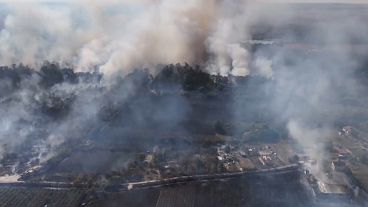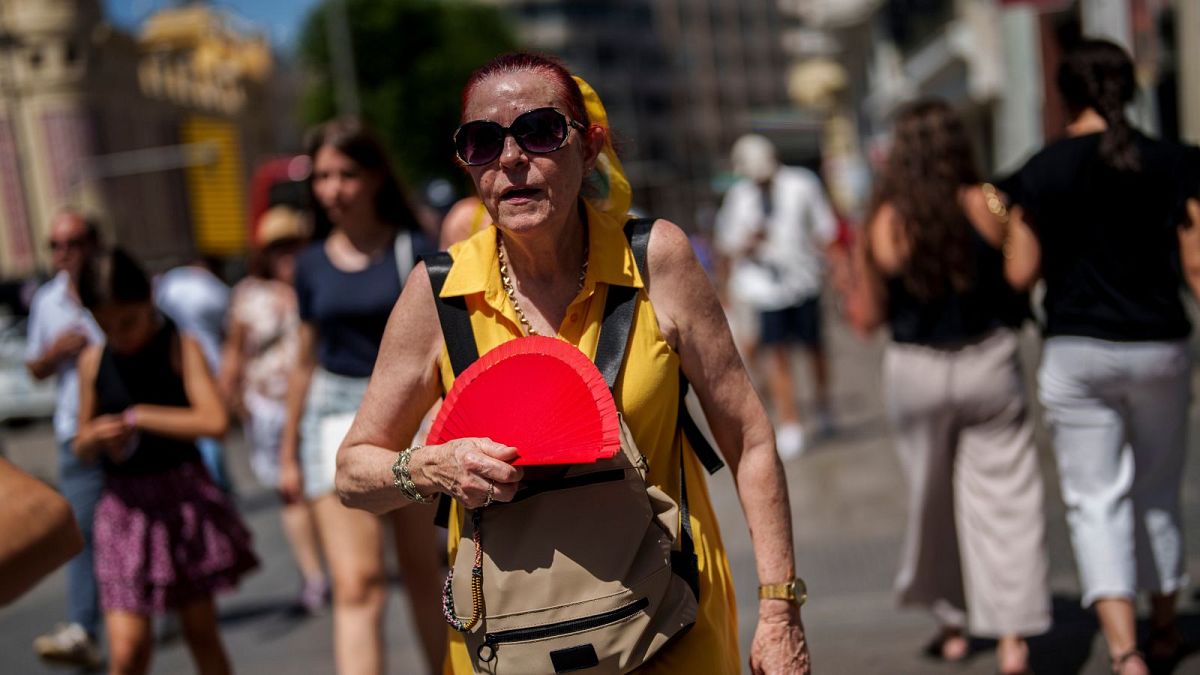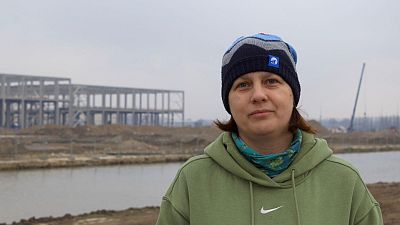Europe is the fastest warming continent on Earth and death records are showing the impact.
Extreme heat is killing more than 175,000 people a year in Europe, the World Health Organisation (WHO) has declared today.
Globally, there have been around 489,000 heat-related deaths each year between 2000 and 2019, with people paying the “ultimate price” for climate inaction. Europe is the fastest warming continent on Earth, accounting for the large proportion of global deaths.
The United Nations agency’s dire assessment comes days after a call to action on extreme heat from UN Secretary-General António Guterres.
“Billions of people are facing an extreme heat epidemic - wilting under increasingly deadly heatwaves, with temperatures topping 50 degrees Celsius around the world [...] halfway to boiling,” he said on 25 July, in the wake of three days of record-breaking heat.
“Extreme heat is the new abnormal,” he added, pointing to “fossil fuel-charged, human-induced climate change” as the cause. “But the good news is we can save lives and limit its impact,” he said, going on to give solutions in four critical areas.
How is extreme heat claiming lives in Europe?
Europe temperatures are rising at around twice the global average rate.
“Across the Region, in its 53 member states, people are paying the ultimate price,” states WHO regional director for Europe, Dr Hans Henri P. Kluge.
Of the approximately 489,000 people who die from extreme heat a year, Europe is home to 36 per cent of them, around 176,040 people.
Guterres described the way scorching conditions have “shut down tourist attractions in Europe’s sweatbox cities,” this summer.
The three hottest years on record in Europe have all struck since 2020, and the 10 hottest years have occurred since 2007. Over the past 20 years, there has been a 30 per cent spike in heat-related mortality, with deaths increasing in almost all countries.
As a result, heat stress is the leading cause of climate-related death in Europe.
Temperature extremes exacerbate chronic conditions, including cardiovascular, respiratory and cerebro-vascular diseases, mental health, and diabetes-related conditions, Dr Kluge explains.
Extreme heat is a problem for elderly people in particular, especially those living alone. It can also place an extra burden on pregnant women.
How can we protect ourselves from extreme heat?
“Fact is, that the adverse health effects of hot weather are largely preventable through good public health practices, so if we are better prepared for a hotter Region, we will save many lives, both now and in the future,” says Dr Kluge.
On a national level, more than 20 European countries have heat-health action plans to help their citizens adapt to this deadly facet of climate change.
WHO warns that more must be done to protect communities, however. From its European Centre for Environment and Health in Bonn, Germany, the health agency is developing an updated action plan guidance to help governments prepare.
But there’s plenty of personal actions you can take to look out for yourself and loved ones. WHO’s annual #KeepCool campaign outlines four key ways:
- Keep out of the heat: avoid going out and doing strenuous activities during the hottest time of day. Stay in the shade and do not leave children or animals in parked vehicles. If necessary and possible, spend 2–3 hours of the day in a cool place, such as a supermarket or cinema.
- Keep your home cool: use night air to cool down your home. Reduce the heat load inside your home or hotel room during the day by using blinds or shutters.
- Keep your body cool and hydrated: use light and loose-fitting clothing and light bed linen, take cool showers or baths, and drink water regularly while avoiding sugary, alcoholic, or caffeinated drinks due to their dehydrating effect on the body.
- Take care of yourself and others: check on family, friends and neighbours, especially the elderly, who spend much of their time alone.
How can the world save people from heat-related deaths?
In his address from New York last week, the UN chief outlined four critical areas of action.
Caring for the vulnerable came first. Since crippling heat amplifies inequality, the UN chief has some levelling solutions in mind - including massively increased access to low-carbon cooling.
Early warning systems must also be scaled up, he said. And developed countries should fulfil their adaptation finance promises to help developing countries protect their citizens from unbearable temperatures.
The second item on Guterres’ call to action is stepping up protection for workers.
“The Europe and Central Asia region has seen the most rapidly increasing workforce exposure to excessive heat,” he noted.
With excessive heat being the cause of almost 23 million workplace injuries worldwide, it's essential that laws and regulations - grounded in human rights - are updated and enforced.
Relatedly, boosting resilience of economies and societies was third on the UN chief’s agenda. Tailored ‘Heat Action Plans’ are part of the answer, he said, using science and data to “heatproof” economies, critical sectors and the built environment.
And lastly, what it all comes down to: limiting global temperature rise to 1.5°C.
“To tackle all these symptoms [droughts, wildfires, rising sea levels too], we need to fight the disease,” he declared. “The disease is the madness of incinerating our only home. The disease is the addiction to fossil fuels. The disease is climate inaction.”
He called out fossil fuel expansion in some of the world’s wealthiest countries, and urged all nations to deliver by next year national climate action plans that are aligned with keeping under the 1.5C goal.















